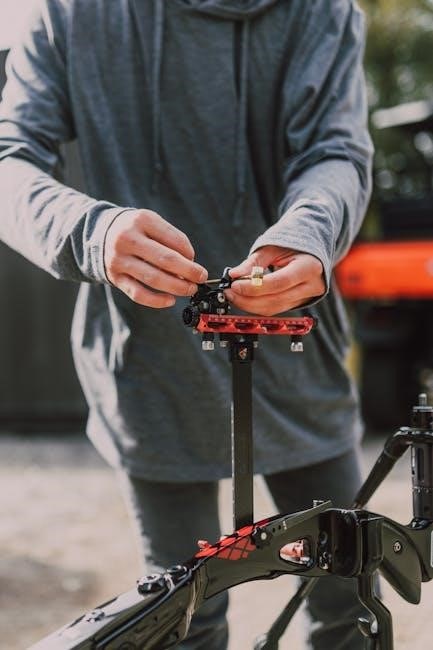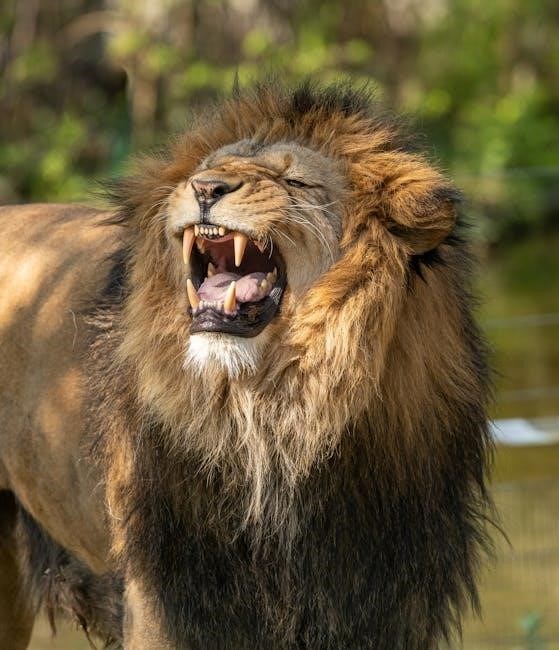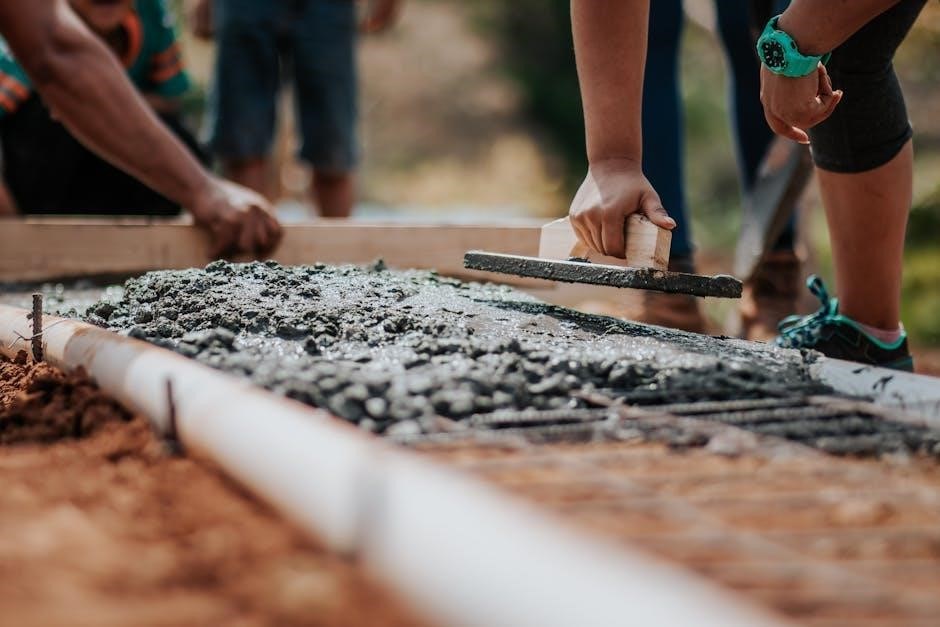Welcome to the Hunter Node 100 Manual, your comprehensive guide to understanding and operating the battery-operated irrigation controller. This manual covers key features, installation, programming, and troubleshooting.
1.1 Overview of the Hunter Node 100 Controller
The Hunter Node 100 is a battery-operated irrigation controller designed for reliable and efficient water management. It features a user-friendly interface, compatibility with DC latching solenoids, and easy installation on Hunter plastic valves. With options for single or dual 9V batteries, it offers extended battery life, making it ideal for remote or hard-to-reach locations.
1.2 Importance of the Manual for Proper Setup and Operation
The manual is essential for correctly setting up and operating the Hunter Node 100. It provides detailed instructions for installation, programming, and troubleshooting, ensuring optimal performance. By following the manual, users can avoid common issues and fully utilize advanced features. It also includes warranty information and maintenance tips, making it a vital resource for both new and experienced users.

Key Features of the Hunter Node 100
The Hunter Node 100 is a battery-operated controller with a long battery life, compatible with DC latching solenoids, and supports multi-station models like NODE-200 and NODE-400.
2.1 Battery-Operated Design and Battery Life Expectancy
The Hunter Node 100 operates on one or two 9-volt batteries, offering a battery life of approximately one year with one battery and two years with two. The non-volatile memory ensures no data loss when batteries are removed. A battery-life indicator provides estimates, with levels marked as Full, Medium, or Low, helping users plan replacements efficiently.
2.2 Solenoid Compatibility and Installation Requirements
The Hunter Node 100 is compatible with Hunter DC latching solenoids (P/N 458200), operating between 9-11 VDC. It is not compatible with 24 VAC solenoids. Installation requires a maximum wire distance of 100 feet (30 meters) using 18 AWG wire. The solenoid can be easily attached to Hunter plastic valves, ensuring reliable operation and straightforward setup.
2.3 Multi-Station Models (NODE-200, NODE-400, NODE-600)
The NODE-200, NODE-400, and NODE-600 models support 2, 4, and 6 solenoids, respectively. These multi-station controllers use standard Hunter programming with 3 programs (A, B, C) and 4 start times per program. They are compatible with DC latching solenoids and offer advanced features like master valve options for enhanced irrigation control and flexibility.

Installation and Mounting Guidelines
The Hunter Node 100 is easily mounted on Hunter plastic valves using a valve mounting clip. A protective rubber cover ensures durability and prevents dirt accumulation.
3.1 Mounting the Controller on Hunter Plastic Valves
The Hunter Node 100 is designed to mount securely on Hunter plastic valves using a specially designed valve mounting clip. This installation method ensures a snug and stable connection. A protective rubber cover is included to shield the controller from debris and ensure long-term durability. The process is tool-free and straightforward, making it easy to install and maintain. Proper alignment of the seal marker ensures a watertight fit, preventing moisture ingress. This setup guarantees reliable operation and extends the lifespan of the controller. Additionally, the mounting clip allows for easy removal if servicing or repositioning is required. The compact design ensures minimal visual impact while maintaining functionality.
3.2 Protective Rubber Cover and Valve Mounting Clip
The Hunter Node 100 includes a protective rubber cover to shield the controller from dirt and moisture, ensuring optimal performance. The valve mounting clip provides a secure, tool-free installation on Hunter plastic valves. This design ensures a snug fit and easy access for maintenance. The rubber cover prevents debris accumulation, while the clip guarantees stability, enhancing the controller’s durability and reliability in various environments.

Programming the Hunter Node 100
The Hunter Node 100 uses standard Hunter controller programming with three programs (A, B, C) and four start times per program. Set the date and time for precise scheduling.
4.1 Standard Hunter Controller Programming with 3 Programs (A, B, C)
The Hunter Node 100 employs standard programming with three programs (A, B, C), each allowing up to four start times, offering flexibility for various watering schedules. Button navigation simplifies programming, enabling quick setup and adjustments for precise control and efficient water management across different zones.
4.2 Setting Start Times and Run Times for Each Program
Setting start times and run times for each program is straightforward. Each program (A, B, C) can have up to four start times, allowing customized watering schedules. Use the buttons to select the desired program, then adjust the start times and run durations for each station. This ensures precise control over irrigation cycles, optimizing water usage for different zones and plant needs.

Manual Watering and Advanced Features
Explore manual watering mode for testing stations and advanced features like Easy Retrieve memory, enabling quick restoration of preferred programs for efficient irrigation management.
5.1 Manual Watering Mode for Testing Stations
The Hunter Node 100’s Manual Watering Mode allows users to test individual stations or specific programs with a set duration. This feature overrides weather sensor conditions, enabling direct control for troubleshooting. It’s ideal for diagnosing issues without waiting for scheduled cycles, ensuring each station operates correctly.
5.2 Easy Retrieve Memory for Saving Preferred Programs
The Easy Retrieve Memory feature allows users to save preferred irrigation programs to the controller’s permanent memory. This ensures quick restoration of original settings, overriding any changes made. It’s ideal for maintaining consistency and avoiding reprogramming. The feature is accessed via advanced programming, ensuring your custom schedules are preserved securely for future use.

Troubleshooting Common Issues
This section addresses common problems like no water flow, faulty solenoids, or sensor connectivity issues. It provides solutions and diagnostic steps to ensure optimal controller performance.
6.1 No Water Flow or Faulty Solenoid Diagnostics
Diagnose no water flow by checking solenoid functionality and wiring; Ensure correct DC latching solenoids (P/N 458200) are used. Verify connections and power supply. If issues persist, replace the solenoid. Consult the manual for detailed troubleshooting steps to resolve faulty solenoid or wiring problems effectively.
6.2 Rain Sensor Connectivity and Operation
The Hunter Node 100 supports Hunter Mini-Clik and Wired Rain-Clik sensors to suspend watering during rain. Connect the sensor by cutting the yellow wire loop and linking sensor wires. When activated, the sensor stops irrigation, displaying the System Off icon. Ensure compatibility; wireless sensors requiring 24VAC are not supported. Proper connectivity ensures efficient water conservation and system operation.

Compatibility with Sensors and Accessories
The Hunter Node 100 works with Hunter Mini-Clik and Wired Rain-Clik sensors to enhance functionality. It also supports DC latching solenoids for reliable valve operation.
7.1 Hunter Mini-Clik and Wired Rain-Clik Sensors
The Hunter Node 100 is compatible with Hunter Mini-Clik and Wired Rain-Clik sensors, which automatically suspend irrigation during rain or freezing temperatures. These sensors connect directly to the controller, enhancing water conservation and system protection. The Mini-Clik is a wireless option, while the Wired Rain-Clik requires a physical connection. Both models ensure efficient and weather-responsive irrigation control.
7.2 DC Latching Solenoids and Wiring Requirements
The Hunter Node 100 requires DC latching solenoids (P/N 458200) for operation, ensuring compatibility with Hunter plastic valves. Wiring must use 18 AWG or larger cables, with a maximum distance of 100 feet between the solenoid and controller. DC solenoids operate at 9-11 VDC; 24 VAC solenoids are incompatible. Proper wiring ensures reliable performance and extends battery life.

Downloading the Hunter Node 100 Manual
8.1 Sources for the PDF Manual and Additional Resources
Download the Hunter Node 100 manual from Hunter Industries’ official website or platforms like ManualsLib. Additional resources include product brochures and comprehensive guides for optimal use.
The Hunter Node 100 manual is available as a PDF download from Hunter Industries’ official website, ManualsLib, and All-Guides.com. These sources provide comprehensive guides, including installation instructions, programming details, and troubleshooting tips. Additional resources like product brochures, technical specifications, and user FAQs can also be found online, ensuring you have everything needed for optimal use and maintenance of your controller.
8.2 Language Options and Comprehensive Guides
The Hunter Node 100 manual is available in multiple languages, including English, Italian, and others, ensuring accessibility for global users. Comprehensive guides cover installation, programming, and troubleshooting, with detailed diagrams and step-by-step instructions. Additional resources, such as brochures and technical specifications, are provided to enhance understanding and maintenance of the controller.

Warranty and Support Information
Hunter Industries offers a comprehensive warranty and dedicated support for the Node 100. Contact their customer service for assistance or visit their website for detailed warranty information.
9.1 Contacting Hunter Industries for Assistance
For support with the Hunter Node 100, contact Hunter Industries via their official website or customer service. Visit www.hunterindustries.com for contact details, email support, and phone numbers. Their team provides assistance with troubleshooting, warranty claims, and technical inquiries. Ensure to have your product details ready for efficient service.
Hunter Industries is committed to helping you optimize your irrigation experience.
9.2 Warranty Details and Product Specifications
The Hunter Node 100 is backed by a one-year warranty covering manufacturing defects. Specifications include battery operation (9V DC), compatibility with DC latching solenoids, and weather sensor connectivity. Dimensions are 3″ (diameter) and 2″ (height), with an operating temperature range of -17°C to 60°C. Refer to the manual for full warranty terms and technical details.
This ensures reliable performance and durability in irrigation systems.
The Hunter Node 100 manual provides a comprehensive guide to optimizing irrigation control. Follow the instructions for reliable performance and efficient water management, ensuring optimal results always.
This concludes your complete reference for the Hunter Node 100 controller.
10.1 Summary of Key Points
The Hunter Node 100 manual provides essential guidance for setup, operation, and troubleshooting. It covers battery life, solenoid compatibility, multi-station models, and programming features. The manual also details manual watering options, sensor integration, and warranty information. By following the instructions, users can optimize irrigation control and ensure efficient water management for their specific needs. This guide is a complete resource for mastering the Node 100 controller.
10.2 Final Tips for Optimal Use of the Hunter Node 100
Regularly check and replace batteries to ensure uninterrupted operation. Use DC latching solenoids for compatibility and proper installation. Mount the controller securely and protect it from harsh weather. Adjust programs seasonally to match water needs. Utilize rain sensors to enhance efficiency. Refer to the manual for troubleshooting and maintenance tips to maximize performance and longevity of the Hunter Node 100.



